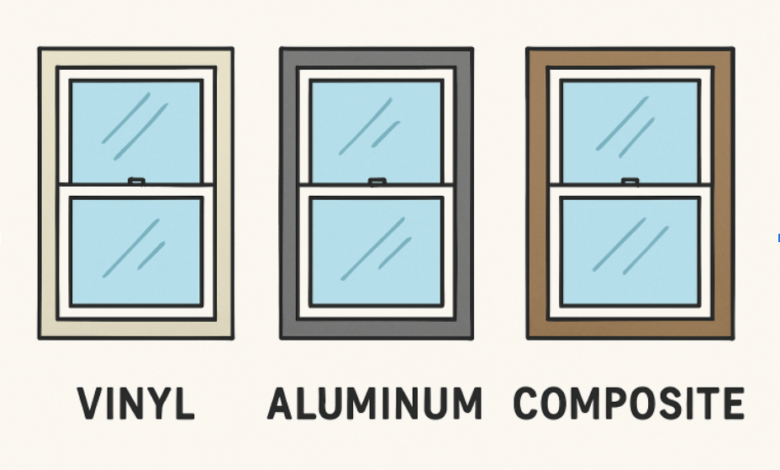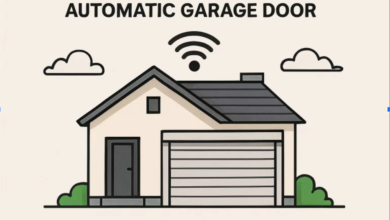How to Budget for Window Replacement Without Sacrificing Quality

Budgeting for window replacement doesn’t mean you have to settle for subpar products or compromise the integrity of your home. With the right strategy, it’s entirely possible to maintain or even boost your home’s value and comfort while keeping costs under control. If you live in Northern Colorado, your first step should be reaching out to a reputable local expert, like Windows Installation Fort Collins, who can offer personalized recommendations and a wide variety of quality, budget-friendly options. When approached carefully, window replacement can transform your living space and deliver impressive returns today and in the future.
This guide will walk you through a strategic process for budgeting a window replacement project. You’ll learn to avoid unnecessary expenses, focus on improvements that matter most, and ensure you maximize performance and aesthetics without overspending.
Assess Your Current Windows
The foundation for successful budgeting is an honest, thorough assessment of your current windows. Start by inspecting every window in your home for obvious and subtle signs of wear and inefficiency. This includes issues like cold drafts, water leaks, condensation between panes, decaying frames, or difficult operating mechanisms. Sometimes, minor deterioration can be temporarily addressed with repairs, but significant problems or energy loss often point to the need for replacement. By evaluating each window individually, you can first update the most problematic units and defer less urgent replacements. This targeted approach prevents you from overspending all at once. It makes it easier to stretch improvements across several months or years, keeping your finances manageable while still addressing the most pressing issues.
Creating a detailed inventory of your current windows—listing size, style, location, and condition—will help you communicate your needs to contractors and get more accurate quotes. Prioritizing windows that contribute most to energy loss or discomfort is a smart strategy for making the biggest impact within your available budget.
Choose Cost-Effective Materials
The choice of window material dramatically affects both initial investment and the ongoing value you receive over many years. Examining different options helps you find the right balance between performance, appearance, and affordability:
- Vinyl Windows: These are often considered the most budget-friendly option due to their lower manufacturing costs. They also provide excellent thermal protection and require very little maintenance. Vinyl doesn’t rot, rarely needs repainting, and performs well in most climates.
- Aluminum Windows: Known for their slimness, lightness, and durability, aluminum frames can be less insulating than other types. They are economical, especially for larger window openings or modern aesthetics. With proper thermal breaks, modern aluminum windows can significantly reduce heat transfer.
- Composite Windows: Made from a combination of wood fibers and polymers, composite windows offer the durability of vinyl and the traditional look of wood. Their moderate price tag makes them a logical middle ground, as they insulate well and typically have a longer lifespan than basic vinyl.
When weighing your options, consider the price per window, the expected lifespan, and the energy savings each material can provide.
Opt for Standard Sizes and Styles
Window customization can be tempting, but sticking to standard sizes and styles is one of the most effective ways to keep your project within budget. Standard windows are mass-produced, making them less expensive to manufacture and install compared to custom designs which require special fabrication and extra labor. Classic options like single-hung and double-hung windows deliver timeless curb appeal and fit most homes seamlessly, reducing complications during installation.
In addition to size and style, keep your color and finish choices simple since premium finishes or specialty colors can carry a significant premium. By standardizing your selections across your home, you further increase installer efficiency and reduce the risk of costly errors or delays. Ultimately, you can still achieve great aesthetics without sacrificing quality or exceeding your budget.
See also: The Silent Threats: Health Risks Lurking in Your Home
Prioritize Energy Efficiency
While energy-efficient features can add to a window’s upfront cost, they help lower utility bills and provide more stable indoor temperatures, creating savings that add up month after month. Look for windows with technologies like double—or triple-pane insulated glass, low-emissivity (low-E) coatings that reflect heat, and inert gas fills such as argon or krypton to insulate even further. These features work together to dramatically inhibit heat transfer, resulting in your HVAC working less to maintain comfort in both winter and summer.
Plan for Professional Installation
Proper installation is just as important as the quality of the window itself. Even the best windows can underperform and fail prematurely if improperly fitted. While do-it-yourself approaches may be tempting for budget reasons, mistakes can cause leaks, drafts, and even structural damage, leading to later expensive repairs. Professional installers guarantee the fit and weatherproofing of each unit, and most reputable companies also stand behind their work with warranties that protect your investment.
Collect multiple estimates and review installer credentials, certifications, and past customer experiences. A trusted contractor is more likely to deliver value, minimize disruptions during the process, and ensure your window upgrade meets all building codes and performance expectations. These steps ensure you get the most from your investment by avoiding costly pitfalls.
Explore Financing and Incentives
Window replacement projects represent a significant home improvement expense, but various financing options exist to help make your upgrades more accessible. Lenders often offer personal loans, home improvement loans, or allow you to borrow against your home equity at competitive rates. Many window companies or installers even offer go-to financing plans that break the cost into manageable monthly payments.
Additionally, don’t overlook available government and utility company programs—many states offer rebates, low-interest energy loans, or tax incentives when you install windows that meet certain efficiency criteria. Thoroughly research what’s available in your area and ask your chosen contractor for advice on qualifying products. These incentives can significantly reduce your final out-of-pocket cost, making high-quality upgrades more affordable than you may expect.
Conclusion
Investing in new windows is a strategic way to upgrade your home’s comfort, energy efficiency, and overall value. By taking a methodical approach—assessing your current windows, carefully selecting materials and standard sizes, prioritizing energy-saving features, seeking professional installation, and researching financing programs or incentives—you can complete your window project within a reasonable budget.



